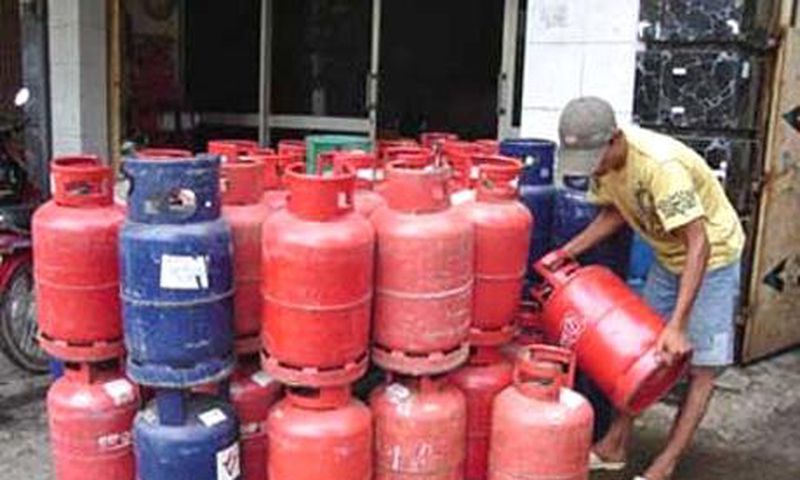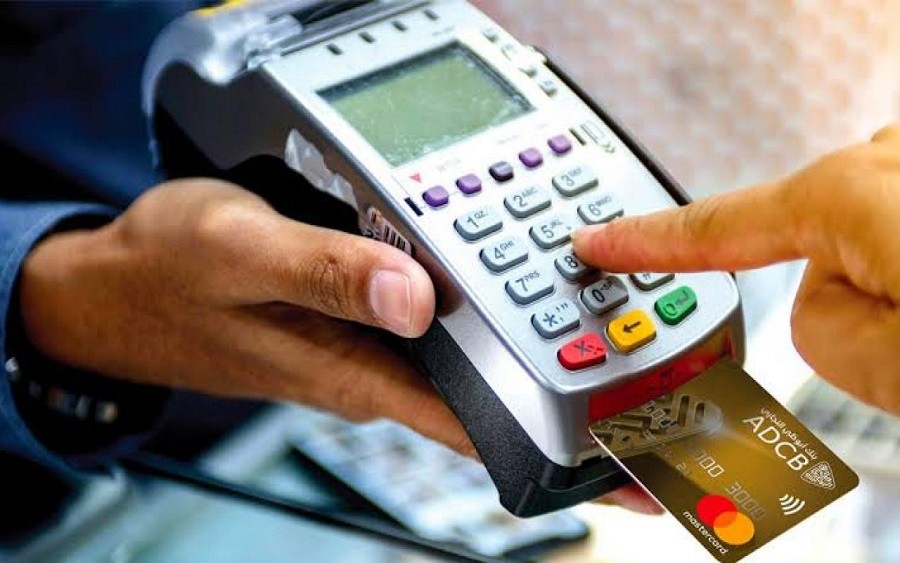The Central Bank of Nigeria (CBN) hopes to lift agricultural lending above the current level of less than five per cent of banks’ credit, with Governor Olayemi Cardoso declaring that agriculture must receive its “rightful place in our financial system and national priorities.”
Cardoso spoke in Abuja on Tuesday at the inauguration of the newly constituted Board of the Agricultural Credit Guarantee Scheme Fund.
He told the audience that the event marked “a defining moment — a bold statement of intent that signals a new dawn for agricultural financing in Nigeria.”
He said agriculture remained the backbone of the economy, contributing more than one-fifth of GDP and employing most Nigerians, yet “it receives only a small fraction of formal credit — less than 5 per cent of banks’ lending goes to the agricultural sector.
According to him, this chronic underfunding has stifled productivity and expansion for millions of farmers.
“It is a reassessment of norms: we will no longer accept business-as-usual,” he said. “Instead, we embrace a future where agriculture is accorded its rightful place.”
Cardoso said the fund, which guarantees up to 75 per cent of the value of agricultural loans, had helped banks lend to farmers for decades, including those considered “unbankable.”
He noted that the scheme had been strengthened following a 2019 amendment that expanded its share capital from N3bn to N50bn and broadened its mandate.
He said the reform was designed to deepen inclusivity, adding that the revised Act now provides for a board composed not only of government officials but also of farmers’ representatives.
“Such inclusivity is strategic: it enshrines partnership between policymakers, financiers, and the farming community in guiding the Scheme’s activities,” he said.
Cardoso described the sector as standing at the “crossroads of unprecedented opportunity” under the Federal Government’s Renewed Hope agenda.
He said the vision was to build a resilient, technologically advanced and inclusive agricultural economy that “ensures food security, reduces poverty, and creates wealth for millions of Nigerians.”
According to him, smallholder farmers constitute 80 per cent of Nigeria’s farmers and produce about 90 per cent of food, yet they continue to face high barriers to credit.
“Many lack collateral or credit history — a situation we can no longer afford, given that these same smallholders feed our nation and drive our rural economy,” he said.
He urged the new board to focus on strategic priorities that could unlock value quickly.
He called for deeper financial inclusion to reach women and young farmers, noting that rural women were key actors in agriculture but often had less access to credit and technology.
“Studies indicate nearly 60 per cent of rural women do not use mobile internet, limiting their access to emerging digital services,” he said.
He asked the board to collaborate with microfinance banks, cooperatives, and fintech firms, and to use group lending, mobile money, and agent banking to ensure that “a lack of collateral or a remote location is no longer an insurmountable barrier to financing.”
Cardoso also tasked the board with establishing stronger oversight, monitoring, and evaluation systems using technology and data.
He said modern tools, including satellite imagery and digital dashboards, should be deployed to track loan performance, crop progress and emerging risks.
“Every naira guaranteed must deliver real value on the farm and in the marketplace,” he said.
The governor warned that the task ahead may appear daunting, given the size and complexity of agricultural value chains.
But he insisted that success depended on “innovation, integrity, and unyielding dedication.”
“With today’s inauguration, we have filled a void and renewed our commitment to a prosperous, food‑secure Nigeria,” he said. “Let us cultivate a future where every farmer can easily access the financing they need, every field yields its full potential, and every Nigerian can enjoy affordable, plentiful food on their table.”
Cardoso congratulated the newly inaugurated board and assured them of the central bank’s support.
Also speaking, the chairman of the newly inaugurated board, Dr Olusegun Oshin, said the scheme must focus on the grassroots, where the majority of farmers struggle without credit or storage facilities.
He told the gathering that “those that feed us are those weak, poor farmers very far away in the villages and who don’t have access to credit,” adding that even when they manage to raise funds, “they don’t even store it properly because they don’t have the capacity for storage.”
Oshin said the board would ensure the fund was impactful at the level of peasant farmers and smallholders.
“This fund… will be focused on ensuring that it is impactful at the grassroots level, at that level where Nigeria is faced, the level of the peasant farmers,” he said.
He also welcomed the inclusion of agribusiness and allied sectors, noting that technology and accountability would be central to implementation.
Oshin noted that proper reporting must show that money given to clusters of farmers produced measurable results.
He added that detailed monitoring and evaluation would strengthen the case for more resources, while stressing that reaching more farmers efficiently would improve food supply nationwide.
Oshin thanked the apex bank for the opportunity and assured that board members would uphold ethical standards.
The PUNCH earlier reported that the agricultural sector contributed N30.5tn, in nominal terms, to the Gross Domestic Product in the third quarter of 2025.
Crop production drove the agro-sector’s growth, which stakeholders attributed to improved investor confidence.
The figure from the National Bureau of Statistics represents one of the sector’s strongest quarterly showings in recent years, with crop production alone accounting for N20.13tn or 65.99 per cent.
The sector also posted a real GDP growth rate of 3.79 per cent year-on-year, surpassing its Q3 2024 performance of 2.55 per cent by 1.24 percentage points, and outperforming its 2.82 per cent growth in Q2 2025 by 0.97 points amid poor access to bank credit.New Nigeria People’s Party, Femi Aina, has been re-elected for another term of four years.
Aina, according to a statement on Tuesday, was elected alongside other executives during the state party’s congress held at the party’s secretariat at Adatan, Abeokuta, the capital of the state.
Prof Tajudeen Gambo, Chairman of the Organising Committee of the state congress, alongside the Secretary of the committee, Abdullahi Dogonnama, as well as Alhaji Ibrahim Sai Kure, and Alhaji Hamza Masu, who are members of the committee, supervised the congress.
The congress was also monitored by INEC officials and security agents.
Aina, in his acceptance speech, said that his re-election marked a new dispensation for the state chapter of the party to begin massive mobilisation ahead of the 2027 elections.
The party chairman pledged to foster unity, bringing everyone on board irrespective of tribes, tongues and religion, with the sole aim of strengthening the party membership in the state.
Aina said, “This is no doubt a new dispensation for Ogun NNPP. We are going to ensure equal representation of various groups within the party. We are going to kick off massive mobilisation ahead of 2027 because everyone is important to our resolve to chase APC out in 2027.
“We will reach out to the Kwa Kwa Siya group, we will reach out to women, and we will make sure that women decide issues affecting women. It will be a new leadership with renewed dedication and vigour to serve and deliver Nigerians from the incompetent government of the APC.”
He thanked the delegates for the confidence reposed in him and other executive members promising to provide a leadership that will further help deepen democratic ideals of fairness, justice and good governance.
Other executive members include Alhaja Sakirat Arowolo, the Deputy Chairman, Rasaq Segun Sofowora as Secretary, as well as Mrs Yetunde Akindele, Women Leader, among others.
Speaking earlier, Gambo commended the resilience of NNPP members in the state despite challenges, urging the newly elected and sworn-in executives to be determined to push NNPP stronger come 2027.
He disclosed that the intention of the party to take over the leadership of Nigeria across all levels comes 2027, lamenting that the present APC administration is not mass-oriented
Gambo said, “Our strong intention is to take over Nigeria in 2027. We are determined, and we are working very hard, because the present government is running the affairs of the country to address the needs of the masses.
“Whereas NNPP is for the masses, it is free education for everybody; everybody must be educated, so we are really confident that we are going to succeed in 2027 by the special grace of God. That’s our dream and vision, and we call on all Nigerians to team up with us on this rescue mission.”
Opposition parties have always faulted the APC-led government, accusing it of foisting hardship on Nigerians, particularly with the subsidy removal, as well as the rising wave of insecurity across the country.
They have always threatened massive mobilisation ahead of 2027, with the sole aim of getting the party out of power.
punch.ng
FOLLOW US ON:





























